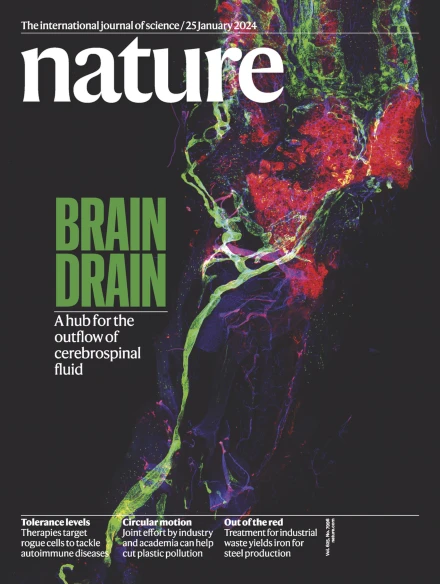Multigenerational cell tracking of DNA replication and heritable DNA damage
IF 50.5
1区 综合性期刊
Q1 MULTIDISCIPLINARY SCIENCES
引用次数: 0
Abstract
Cell heterogeneity is a universal feature of life. Although biological processes affected by cell-to-cell variation are manifold, from developmental plasticity to tumour heterogeneity and differential drug responses, the sources of cell heterogeneity remain largely unclear1,2. Mutational and epigenetic signatures from cancer (epi)genomics are powerful for deducing processes that shaped cancer genome evolution3–5. However, retrospective analyses face difficulties in resolving how cellular heterogeneity emerges and is propagated to subsequent cell generations. Here, we used multigenerational single-cell tracking based on endogenously labelled proteins and custom-designed computational tools to elucidate how oncogenic perturbations induce sister cell asymmetry and phenotypic heterogeneity. Dual CRISPR-based genome editing enabled simultaneous tracking of DNA replication patterns and heritable endogenous DNA lesions. Cell lineage trees of up to four generations were tracked in asynchronously growing cells, and time-resolved lineage analyses were combined with end-point measurements of cell cycle and DNA damage markers through iterative staining. Besides revealing replication and repair dynamics, damage inheritance and emergence of sister cell heterogeneity across multiple cell generations, through combination with single-cell transcriptomics, we delineate how common oncogenic events trigger multiple routes towards polyploidization with distinct outcomes for genome integrity. Our study provides a framework to dissect phenotypic plasticity at the single-cell level and sheds light onto cellular processes that may resemble early events during cancer development. A multigenerational single-cell tracking approach provides a framework to dissect phenotypic plasticity at the single-cell level, offering insights into cellular processes that may resemble early events during cancer development.


DNA复制和遗传性DNA损伤的多代细胞跟踪
细胞异质性是生命的普遍特征。虽然受细胞间变异影响的生物过程是多方面的,从发育可塑性到肿瘤异质性和不同的药物反应,但细胞异质性的来源仍不清楚1,2。来自癌症基因组学的突变和表观遗传特征对于推断塑造癌症基因组进化的过程具有强大的作用3,4,5。然而,回顾性分析在解决细胞异质性如何出现和传播到后续细胞世代方面面临困难。在这里,我们使用基于内源性标记蛋白和定制设计的计算工具的多代单细胞跟踪来阐明致癌扰动如何诱导姐妹细胞不对称和表型异质性。基于crispr的双基因组编辑能够同时跟踪DNA复制模式和遗传性内源性DNA病变。在异步生长的细胞中跟踪多达四代的细胞谱系树,并通过迭代染色将时间分辨谱系分析与细胞周期终点测量和DNA损伤标记相结合。除了揭示复制和修复动力学、损伤遗传和姐妹细胞异质性在多代细胞中的出现,通过与单细胞转录组学的结合,我们描述了常见的致癌事件如何触发多倍体化的多种途径,并对基因组完整性产生不同的结果。我们的研究提供了一个在单细胞水平上剖析表型可塑性的框架,并揭示了可能类似于癌症发展早期事件的细胞过程。
本文章由计算机程序翻译,如有差异,请以英文原文为准。
求助全文
约1分钟内获得全文
求助全文
来源期刊

Nature
综合性期刊-综合性期刊
CiteScore
90.00
自引率
1.20%
发文量
3652
审稿时长
3 months
期刊介绍:
Nature is a prestigious international journal that publishes peer-reviewed research in various scientific and technological fields. The selection of articles is based on criteria such as originality, importance, interdisciplinary relevance, timeliness, accessibility, elegance, and surprising conclusions. In addition to showcasing significant scientific advances, Nature delivers rapid, authoritative, insightful news, and interpretation of current and upcoming trends impacting science, scientists, and the broader public. The journal serves a dual purpose: firstly, to promptly share noteworthy scientific advances and foster discussions among scientists, and secondly, to ensure the swift dissemination of scientific results globally, emphasizing their significance for knowledge, culture, and daily life.
 求助内容:
求助内容: 应助结果提醒方式:
应助结果提醒方式:


